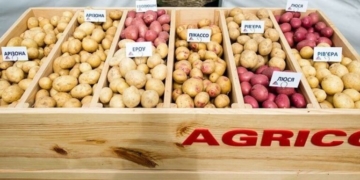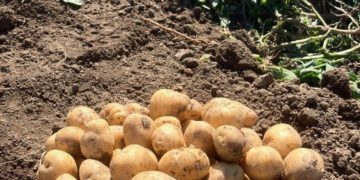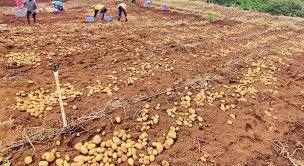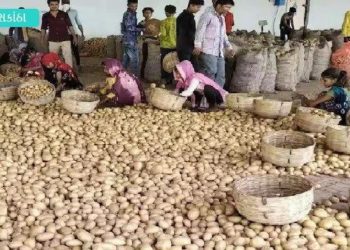In a remarkable development that may not be widely known across India, the tribal farmers of Vishunpur and the surrounding hilly regions of Jharkhand are making significant strides in rainy season potato cultivation. This initiative has gained momentum on 1,500 acres of land in the Hadup area of Vishunpur, showcasing the region’s potential in potato production.
Farmers in this area are increasingly leaning towards cultivating potatoes during the rainy season, particularly on the flat plots adjacent to the hilly-plateau regions. This trend mirrors the successful agricultural practices seen in Ambikapur-Baghicha of Chhattisgarh, where large-scale potato farming has thrived. The transition to rainy season potatoes is not just a local phenomenon but signifies a broader shift in agricultural practices among Jharkhand’s tribal communities.
The enthusiasm for rainy season potato cultivation is palpable, with numerous farmers engaging in this venture across the Jobhipat-Risapat areas. The cultivation cycle for these potatoes is particularly appealing, as they are typically ready for harvest within 60-70 days. This rapid turnaround allows farmers to maximize their land usage and enhance their income potential.
Experts from the Krishi Vigyan Kendra Vishunpur, including Dr. Sanjay Pandey, Dr. Neeraj Vaish, and Sunil Kumar, are actively involved in educating farmers about effective nutrient management and protection measures against issues like late blight. They emphasize the importance of timely planting and the benefits associated with planting in August, although some farmers have opted for a September planting due to lower rainfall.
As local farmers continue to cultivate rainy season potatoes, they are also receiving valuable guidance on quality production techniques. The support from organizations like the Akshaj Farmers Producer Company is instrumental in providing farmers with the necessary information and resources to enhance their crop yield. Farmers are currently engaged in essential activities such as weeding, tilling, and applying key nutrients like Nano DAP, Nano Urea, and Sulphate of Potash to ensure better quality potatoes.
This growing focus on rainy season potato cultivation in Jharkhand highlights the region’s emerging role in India’s agricultural landscape. It represents a unique opportunity for farmers to diversify their crops while contributing to the overall potato production in the country. As awareness increases and practices improve, Jharkhand is poised to become a significant player in the potato market, enriching the agricultural tapestry of India.

















